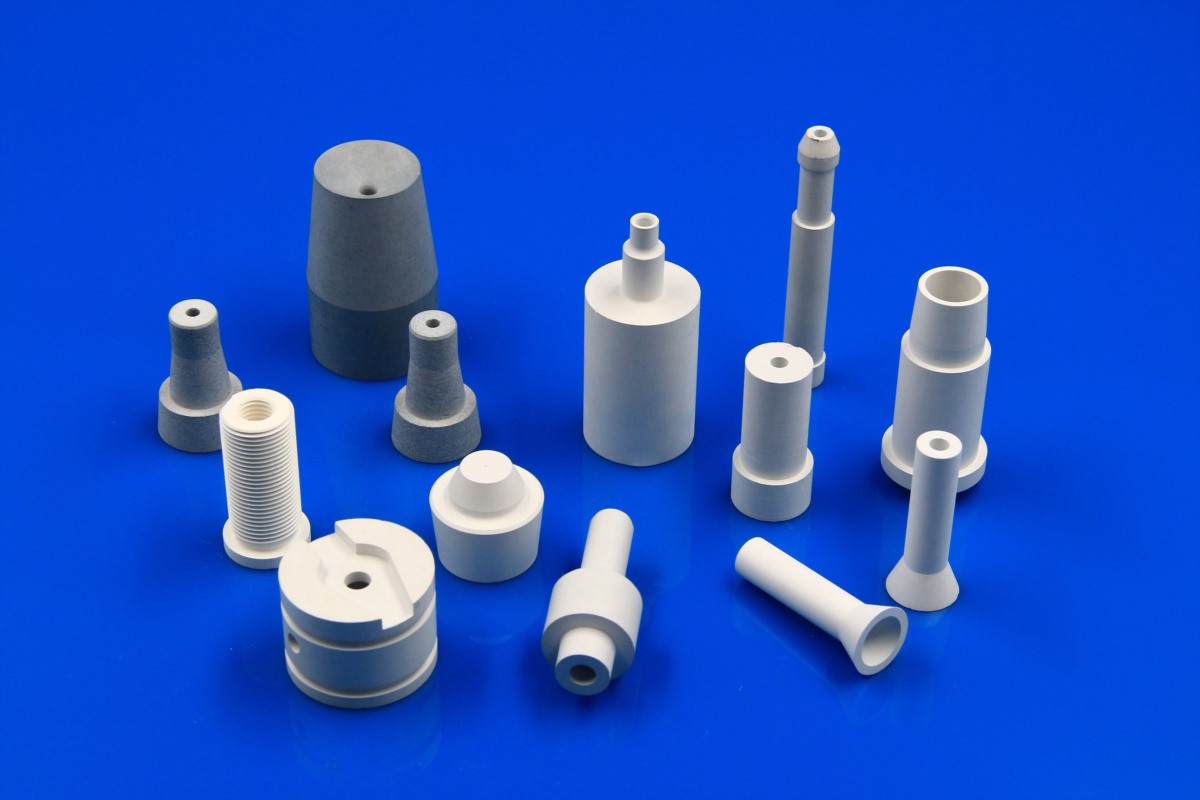Boron nitride nozzles- a solution to solve technical problems from atomization to 3D printing and molten metals
Powder metallurgy has core process advantages such as high material utilization, low unit energy consumption, and environmental protection. It is a technology that is in line with the future direction of carbon neutrality.
In recent years, with the maturity of powder metallurgy technology and the trend of miniaturization of parts, two emerging process routes, metal injection molding (MIM) and 3D printing (AM), have rapidly emerged.
At the same time, the supply of high-quality powder raw materials has begun to become a major factor restricting the development of the industry.
Small and complex parts are undoubtedly more suitable for injection molding and 3D printing (particle size of 20μm or even smaller), and have been increasingly used in high-end fields such as aerospace, medical, electronics, and military industry.
Therefore, the preparation of metal powders with high purity, good sphericity, small particle size and narrow distribution, and low oxygen content has become a new focus in the industry. These parameters have a crucial impact on the quality of metal products.

1.Atomization powder making and nozzle
The water atomization, gas atomization, oil atomization, gas-water linkage atomization, and plasma atomization were developed and replaced the carbonyl method to become the mainstream.
The key component of atomization powder making is the nozzles, largely determines the atomization rate (fine powder yield), and then also determines the production efficiency and powder quality.
The industry continues to explore improvements to nozzles, such as changing the gas, melt, and liquid flow field through design, improving the gas-liquid ratio, and controlling the oxygen content.
The nozzles faces harsh working conditions such as erosion, wear, high temperature, and severe thermal shock. Its material determines the process stability and component life.
High-purity boron nitride ceramics have excellent high-temperature resistance, while composite boron nitride ceramics slightly sacrifice high-temperature resistance in exchange for improved capabilities in different directions such as corrosion resistance, wear resistance, and thermal shock resistance.
Composite boron nitride ceramic nozzles can minimize clogging and metal creep, thereby reducing the frequency of nozzle replacement. Due to the low friction coefficient of boron nitride (BN), the smooth surface finish and tighter tolerances provide predictable particle size distribution between batches. In addition, the extremely strong thermal shock resistance allows boron nitride nozzles to be used without a lot of preheating.
2.3D printing and nozzles
The biggest difference between 3D printing and injection molding is that 3D printing does not require molds, which is more conducive to personalized and diversified production. Since there is no constraint and auxiliary role of the mold, its production process naturally depends more on the performance of the printing equipment and powder raw materials.
The nozzle is a key component that determines the quality of the finished product. Only by selecting the nozzle according to the needs can you get a satisfactory result – the easiest way to understand is that if you pursue speed, you have to give up precision and choose a large nozzle, and if you pursue precision, you have to give up speed and choose a small nozzle.
As metal 3D printing technology develops, the benefits that boron nitride brings to metal atomization are becoming more and more relevant to these new 3D printing technologies.
For example, some 3D printing manufacturers are currently looking for ways to deal with molten metal at high temperatures – high temperatures will cause huge thermal stresses on mechanical parts, thus bringing new challenges in printer design; in addition, there are requirements such as non-adhesion and non-wetting of molten metal liquid…
Boron nitride ceramics’ high thermal shock resistance and low thermal expansion coefficient enable it to withstand high thermal gradients, and its high thermal conductivity helps the rapid solidification of metal after deposition.
Different Types of Boron Nitride Ceramic Properties Datasheet For Atomization
| Properties | Units | UHB | HB | BMA | BSC | BMZ |
| Main Composition | BN>99.7% | BN>99% | BN+ZR+AL | BN+SIC | BN+ZRO2 | |
| Color | White | White | White Graphite | Greyish Green | White Graphite | |
| Density | g/cm3 | 1.6 | 2 | 2.25-2.35 | 2.4-2.5 | 2.8-2.9 |
| Three-Point Bending Strength | MPa | 18 | 35 | 65 | 80.00 | 90 |
| Compressive Strength | MPa | 45 | 85 | 145 | 175.00 | 220 |
| Thermal Conductivity | W/m·k | 35 | 40 | 35 | 45.00 | 30 |
| Thermal Expansion Coefficient (20-1000℃) | 10-6/K | 1.5 | 1.8 | 2 | 2.80 | 3.5 |
| Max Using Temperature In Atmosphere In Inactive Gas In High Vacuum (Long Time) | (℃) | 900 2100 1800 | 900 2100 1800 | 900 1750 1750 | 900 1800 1800 | 900 1800 1800 |
| Room Temperature Electric Resistivity | Ω·cm | >1014 | >1014 | >1013 | >1012 | >1012 |
| Typical Application | Nitrides Sintering | High Temperature Furance | High Temperature Furance | Powder Metallurgy | Metal Casting | Powder Metallurgy |
| High Temperature Electrical Furnace Components | ✓ | ✓ | ✓ | ✓ | ✓ | |
| Metal Vaporize Crucible | ✓ | ✓ | ✓ | |||
| The Container of Metal or Glass Melting | ✓ | ✓ | ✓ | ✓ | ✓ | ✓ |
| The Casting Mould Components of The Precious Metal and Special Alloy. | ✓ | ✓ | ✓ | |||
| High Temperature Support Part | ✓ | ✓ | ✓ | |||
| Nozzle and Transport Tube of The Melting Metal | ✓ | ✓ | ✓ | ✓ | ✓ | |
| Nitrides Sintering (Sagger and Setter Plate) | ✓ |

Comments
Post a Comment